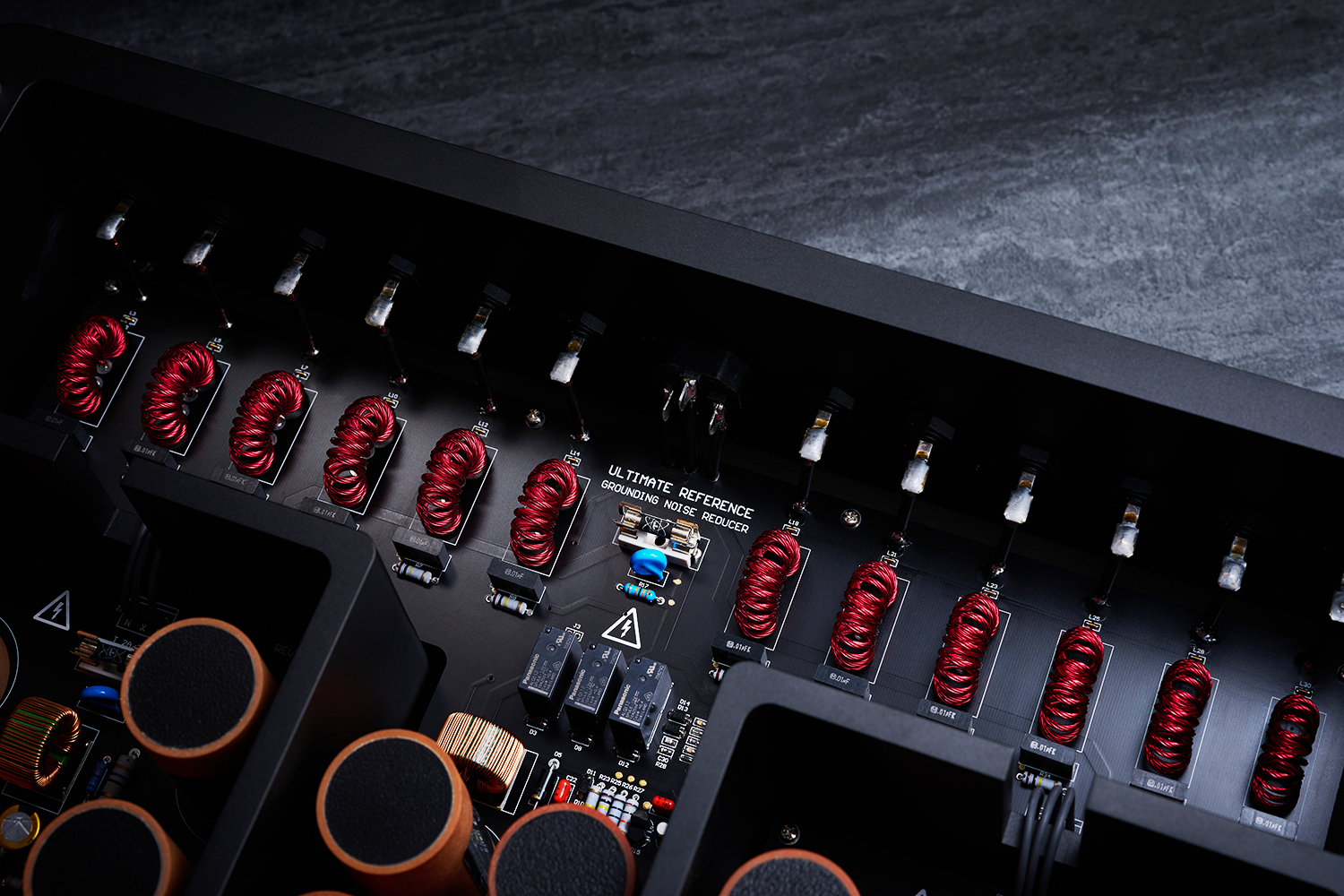The second conclusion is that – despite the suggestion that all the Monster’s terminals are created equal – the two halves of the unit do allow separation of system elements (for instance, analogue and digital components) while the order in which you plug things in matters too.
Thirdly, the Monster works best if it is powered from a separate AC line to the rest of the system. I started with it plugged into the QB8, but shifting it to a secondary socket brought a significant benefit.
Strapping in and firin’ it up…
The test system, with its mix of digital, analogue, signal and chassis grounding options certainly offered plenty of scope for variation. Ultimately I wound up with the Monster connected as follows:
I dedicated one bank of six terminals to analogue connections, the other to digital, something which I found to offer significant benefits. I also found that it was important to have the chassis grounds from the two mono-bloc amplifiers connected to adjacent Monster input terminals. Likewise the two signal grounds from the Connoisseur need to be connected side by side. The two other terminals in the ‘analogue bank’ were given over to the star ground terminal on the QB8 and a spare analogue output RCA on the Pre 1 audio chassis – despite the fact that this is also (and somewhat unusually) a digital component: Although it is perhaps worth noting that, given its intended use as a system controller, the Wadax does contain a more substantial, discrete analogue line-stage than you find in most DACs. When I submitted the draft review for comment, Telos said that recent changes to the Monster mean that you can indeed mix and match analogue and digital grounds across the two terminal banks. Obviously, I can’t comment on that, only on what I heard – which was a clear benefit to separating the two. My advice would be to keep them separate if possible: if not, then take Telos at their word and connect as suits best. Just make sure that you listen to and compare the results before finalising the grounding topology.

The other row of six terminals became the ‘digital bank’ with terminals connected to the chassis grounds on the PRE 1 PSU and D1.5 and signal grounds connected to an unused digital output on the D1.5 and the PRE 1 audio chassis’ ground post. I spent a long time futzing with different input and output connections on the digital components, but I kept coming back to this arrangement. Multiple connections to digital inputs/outputs (or a mix of both) was a definite no-no, on both the PRE 1 and the D1.5, while running the CH as a standalone player I got the best result by connecting ground wires to its chassis ground, an unused digital output and to each of the dual-mono DAC cards – making four connections to a single component! I can begin to understand why Telos sent the twelve terminal Monster!
This Monster’s ‘Super Power’…
With all this talk of different connections, it’s about time to discuss what the Telos Monster actually delivered in sonic and musical terms and, given the price, it better be something that the various PPG approaches don’t deliver. Of course, each approach does possess its own strengths, even if they share a common performance footprint. So the CAD Ground Controls work really well at high-frequencies and on digital components. The Nordost QK units really clean up the bottom end. Their contributions are, in many ways, complementary and I find myself applying them in tandem more often than not.

